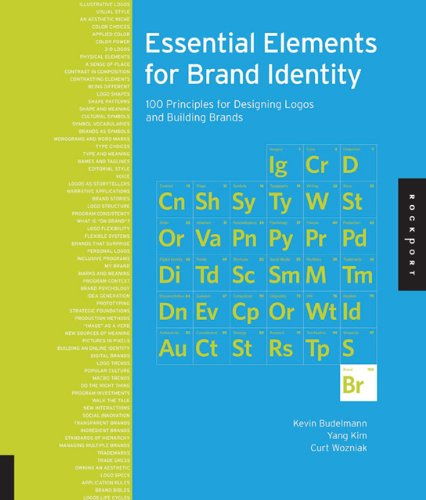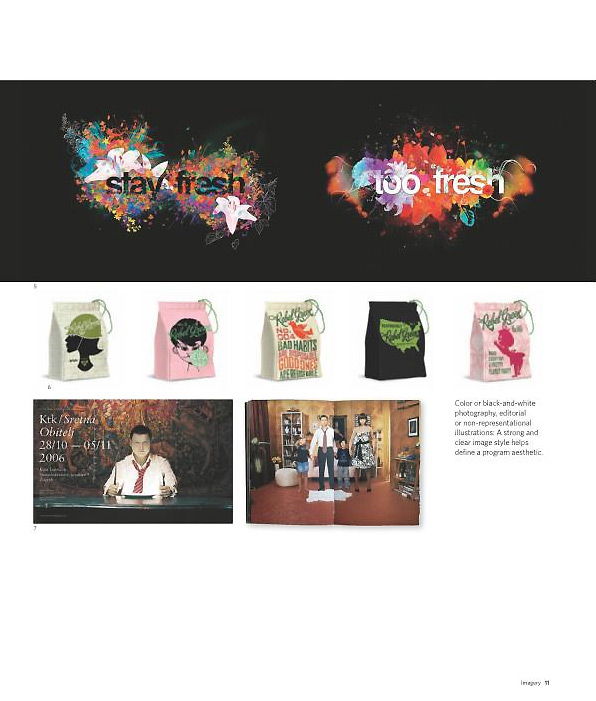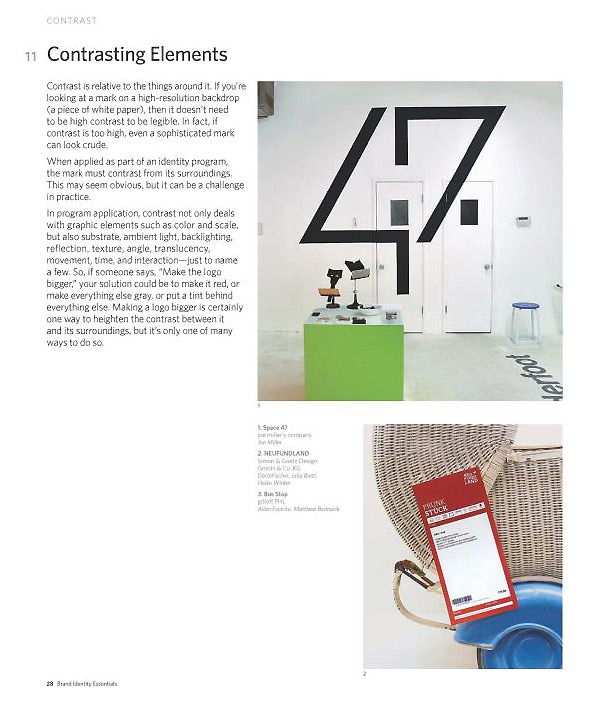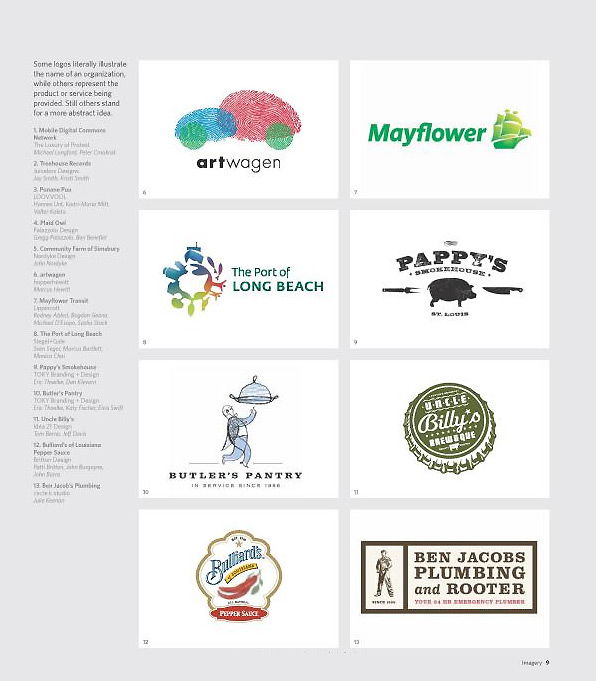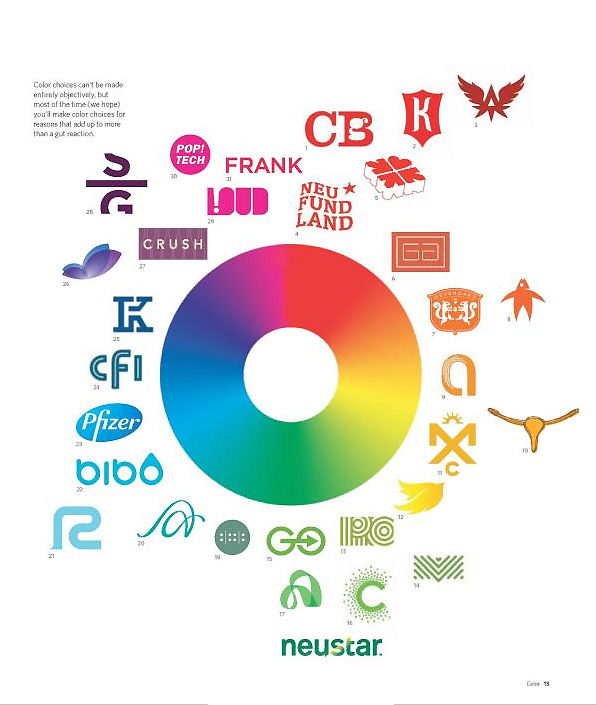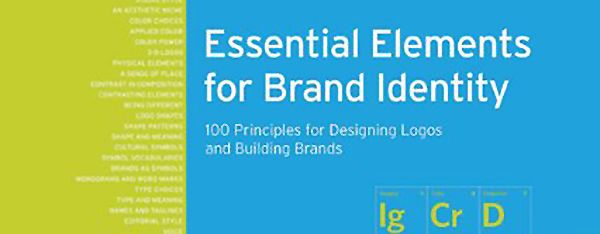Essential Elements for Brand Identity
ISBN: 9781592537938
Essential Elements for Brand Identity: 100 Principles for Designing Logos and Building Brands by Kevin Budelmann, Yang Kim and Curt Wozniak; and published by Rockport is all about building strong effective brands. Through 100 principles or as I say, “hot tips”, the title explores a variety of considerations you need tot hink about before you build an image for your brand, your customers brand or even an image for a product or subdivision. Through beautifully illustrated pages with examples from world-class design houses one can very quickly grab the core concepts of designing a brand image.
This is not just another logo book, or a logo book with a twist, but rather is a cohesive effort to explain the design aspects of brand. Although the book is advertised as being a bridge between design and business values it certainly does hang in the design arena, and I think this is partly a missed opportunity. There are 33 action packed chapters in Essential Elements for Brand Identity and they include:
- Imagery
- Colour
- Dimension
- Contrast
- Shape
- Symbols
- Typography
- Writing
- Story
- Order
- Variation
- Personalisation
- Psychology
- Process
- Production
- Digital Identity
- Trends
- Shortcuts
- Social Media
- Multiples
- Intellectual Property
- Documentation
- Evolution
- Competition
- Originality
- Wit
- Idealism
- Authenticity
- Commitment
- Strategy
- Research
- Touchpoints
- Inspiration
- Simplicity
Each of these sections are split up into a further 1 page sections totalling up the 100 principles. Some key areas I was able to take out include logo structure and the importance of keeping a consistant brand image. This can help establish familiarity with your brand which can be a powerful tool in the long term. Another interesting section was the psychology section where they talk a little bit about how aesthetics represent your brand and the type of image portrayed to your customers.
One must recognise that Essential Elements for Brand Identity is not a one-stop shop for understanding everything to do with brand design. In fact it really takes many many books and articles and years of industry experience to really appreciate brands. However the benefit of Essential Elements for Brand Identity is that it is a great starting point for further exploration; it is like a Wikipedia article for brands. Fortunately there are many other great resources, some published by Rockport, that do cover these areas in greater detail. So there are some weaker chapters like the section on Intellectual Property and Documentation which are no where near adequately cover all bases; however some chapters like Symbols and Wit are well resolved. So although you do get a uniform structure in Essential Elements for Brand Identity I believe the appropriation of depth in the title has been sacrificed.
The title does cover many aspects of brand and how it relates to business, but it is unfortunate this isn’t covered more heavily. It can sometimes feel like a logo book in disguise, and let’s be frank there are plenty of them around. Design for brands is really about having a design that accurately represents your corporate culture and the quality or angle of your products and services. Although chapters like research and digital identity attempt to give examples of this it would have been nice to see more. Another weakness is how these chapters relate to one another, although page to page it flows nicely there is no demonstration on the hierarchy or order of these considerations. This could result in the title being a little overwhelming for a beginner as they are trying to somehow grapple all 100 principles for their next design. However this is perhaps coming from my very analytical mind, and I suspect that most will see this as a more gentle coffee-table book that you use for pointers and inspiration.
A positive of the title is that there is a good variety of different design mediums being utilised from t-shirts, posters, invitations and packaging. This gives a well-rounded view on how design can be utilised to communicate brands. Essential Elements for Brand Identity strikes a good balance between writing and photos/illustrations. Those who want a stronger theoretical backbone, and those who after a logo inspiration book may be disappointed in this balance.
Despite my very very minor complaints I must stress that on the whole my experience with Essential Elements for Brand Identity is a very positive one. I do recommend it for professional designers, marketers and students as a means to understand brands and branding to greater effect.
[rating:3.5]


